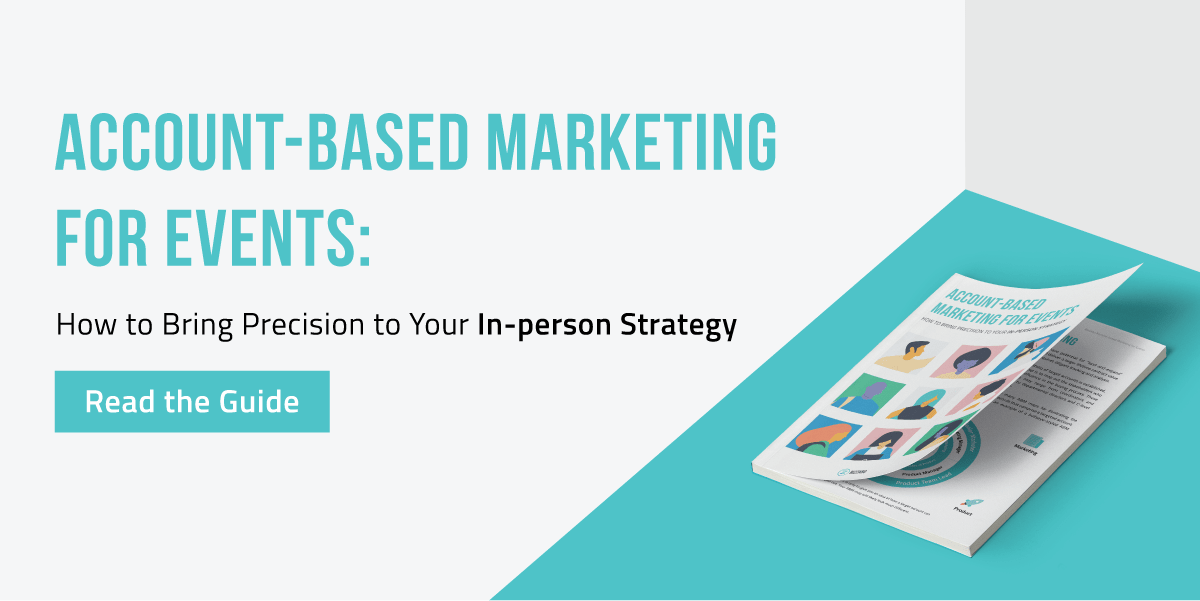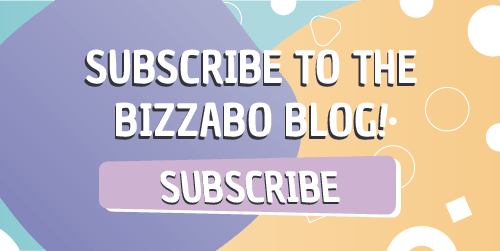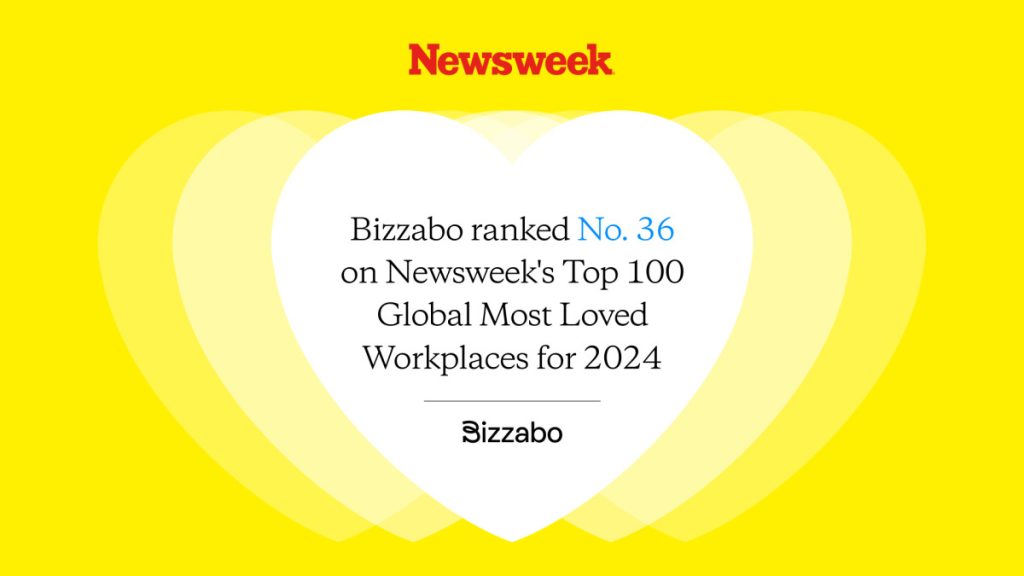Account-Based Event Marketing: 15 Powerful Tips


As a child, I absolutely loved the toy store. It took a lot of self-control to not throw every single toy into the cart. Unfortunately, buying the entire store was never an option so my mom had me make a list of the toys I really wanted. It was never a guarantee that she would buy everything on the list so I had to be careful with my choices. Each toy had to be reasonably priced and still cool enough to show off to my friends. It was a lot of strategic thinking for an 8-year-old, but when I got the toys I wanted, the payoff was worth the brain sweat. Account-based marketing (ABM) is not very different from making toy wishlists.
What is Account-based Marketing?
The concept of ABM centers around the idea of targeting a specific list of key accounts whose needs perfectly fit your product offering and thus add most value to the company. The campaigns for each account are then personalized to ensure maximum engagement. ABM strategy is ideal for companies who have a strong grasp on their product-market fit and thus a clear understanding of which accounts would be ideal clients. When executed properly, ABM is mutually beneficial for both the supplier and the customer since the strategy is specifically designed to directly address the client’s needs, which in turn results in valuable long-term partnerships.
Account-based Marketing for Events
When applying ABM strategy to event marketing, the organizer witnesses the power of live events coupled with the deep impact of a more personalized marketing strategy. Striving for an account-based event marketing strategy involves many of the traditional principles of ABM that are executed through the live events channel. This hybrid solution just may be the perfect solution for developing sustainable, long lasting relationships with key clients.
To better understand how account-based event marketing can help you boost your event ROI, check out the tips below!
1) Start the process early
Event organizing alone requires considerable anticipation and early planning. When combined with an account-based strategy, the phrase “planning ahead” takes on a whole new meaning. By its very nature, account-based marketing is a long-term strategy. Putting in the time and energy to develop genuine relationships with key accounts requires significant effort.
These relationships are the foundation upon which successful ABM strategies thrive. And so, it’s important to start very early in both the account relationship building process as well as the event planning process. Once the relationships begin to take shape, creating the perfect event around these specific accounts will start to form as well.
2) Establish clear criteria for targeted accounts
The most important aspect of account-based marketing is your portfolio of accounts. Because you will be spending significant time, energy, and resources on a select list of companies, it is imperative that you choose the ones that are most attainable and, at the same time, hold the most potential value. Make sure to create a crystal-clear set of criteria that you will use to make your list of target accounts.
How large should the company be? If you’re specifically targeting their marketing department, how large should their marketing team be? Which industry should you focus on? Which subset of this industry should you focus on? The more specific your questions are, the more granular your criteria will become which is ideal for ABM strategy.
3) Find specific points of contact for each account
Once the list of accounts is finalized, find the specific points of contact you will want to stay in communication with. More often than not, you will want to keep in contact with the individuals in the company who have decision-making power.
If your ultimate objective is to have them purchase your product, maintaining communication with senior executives will best serve your goals. You may even want to find several points of contact for the same account, especially if the company is large and will require multiple touchpoints for you to stay top of mind. Start at the top and from there identify other significant contacts.
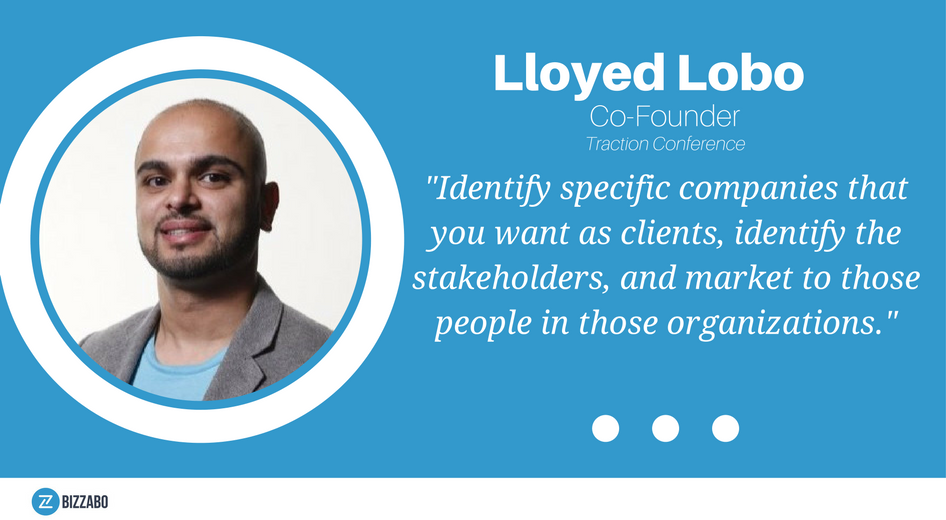
“Identify specific companies that you want as clients, identify the key stakeholders, map out the organization, and market to those people in those organizations that have relevant content at different levels of influence. Try to find all the influencers right. Start with the CEO of a specific company or whatever title you’re looking for. Then figure out who’s in that person’s circle of influence. Then find out how to dominate that sphere.“
—Lloyed Lobo, Co-founder and Chair, Traction Conference
4) Develop a relationship well before the event start date
After you have zeroed in on the specific individuals for each account, develop a rapport with these contacts before the start of your event. Doing so will require tactful outreach strategies that prevent you from coming off as generic or too aggressive. Offering consistently valuable content through monthly email newsletters is a good way to earn the trust and respect of the specific individuals you’re looking to connect with.
Another strategy can be to reach out to these individuals for advice or expertise on a particular topic. For example, if you are writing an ebook on digital marketing strategy and your list of target contacts consist of a few digital marketing executives, reach out and ask if they’d be willing to offer any thoughts on the subject. You’d be surprised at how eager people are to contribute their thoughts, especially if you have a wide-reaching audience. Once this initial stage of communication is reached, make sure to reach back out from time to time to further develop the relationship.
5) Create personalized content for each account contact
When reaching out to your specific account contacts, take it a step further by creating personalized content that is directly relevant to your points of contact. According to the Harvard Business Review, customers who perceive supplier content to be tailored to their specific needs are 40% more willing to buy from that supplier.
Since creating individualized content for each contact might be too demanding, try segmenting your accounts list by subgroups and devise a content strategy in which you generate relevant content for each subgroup. For example, your list of account contacts may consist of experiential marketing managers, social media strategists, and B2B marketers. For a list like this, you will want to create content that touches on these three topics. By tailoring your content, there is a higher chance that it will resonate with your contacts and, in doing so, raise the likelihood of them continuing to engage with your brand.
6) Send out pre-event surveys to gauge and plan event content
You’ve now set a solid foundation for a consistent account-based marketing campaign. Great work! Now that you’ve established relationships with your account contacts and have a better idea of what they are looking for, you are ready to start planning the content for the event. To get an even clearer understanding of what your account contacts are hoping to learn, send out pre-event surveys asking which type of event content would be most helpful to them. This will greatly assist in helping you find speakers, organize sessions, and finalize the value offerings of the event.
7) Send personalized email invites to each account
Once the bulk of the event is organized, spend time creating personalized invites for each account contact. Depending on your list of target accounts, this may take more time and resources than you are used to, but personalizing each email will yield greater click-through results. If you’re using an event management software, make sure the software has email personalization capabilities to assist with the campaign. This will make the email drafting process much quicker.
8) Tailor the event website experience
Design your event website so that tailored content is revealed for targeted accounts. In other words, if a handful of targeted accounts are HR software marketers, design the event website so that a specific homepage is revealed for only these visitors. This is done by obtaining the IP addresses for the key accounts and triggering “smart” website content accordingly. Doing so will increase the chances of your event website deeply resonating with your account contacts and thus convincing them to register.
9) Track web traffic from target accounts
While high website traffic is often times a sought after metric, for ABM strategies, the only traffic that matters is the one that is coming from target accounts. In order to specifically track the website activity of targeted accounts, locate their IP addresses and track them. Keeping tabs on visits from target accounts will help you measure the effectiveness of your tailored website experience. You can track IP addresses and other key event metrics in Google Analytics.
10) Conduct targeted display ad campaigns
Once you know enough about your account contacts, you can use those same characteristics to run targeting display ad campaigns. A popular tool for such campaigns is Google AdWords. Just specify the traits that you are targeting form and Google will place your ad on its multiple networks and make sure that your targeted demographic (in this case, your account contacts) see the ads while they surf the web.
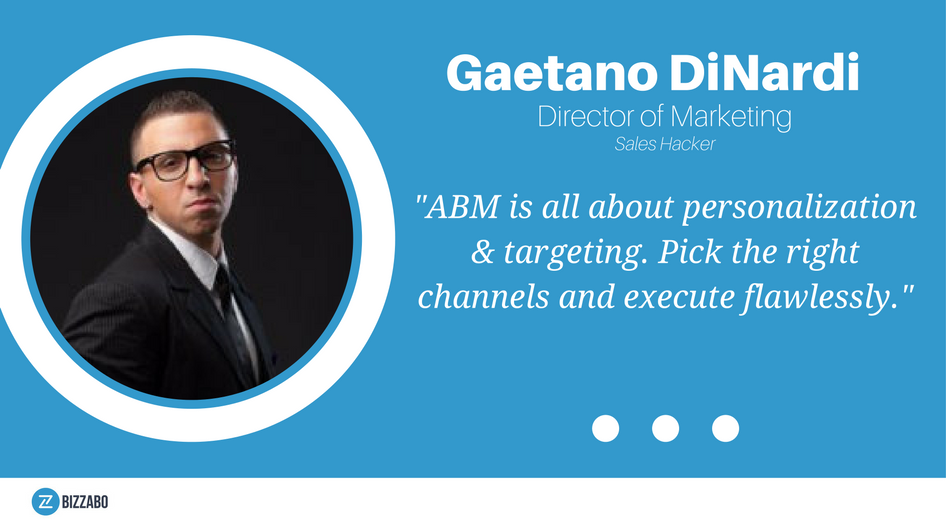
“ABM is all about personalization and targeting. It’s all about clearly defining your target accounts and key players. Pick the right channels and execute flawlessly, then measure and optimize.“
—Gaetano DiNardi, Director of Marketing, Sales Hacker
11) Execute on targeted social media campaigns
Similar to targeted display ads, social media ads also allow for effective targeted campaigns. LinkedIn allows you to target for company size, location, and even job title. Facebook ads also allows for very specific traits. Make sure to utilize social ad campaigns to their maximum potential to achieve the highest-click through-rate among your account contacts. Check out our epic guide to Facebook event promotion!
12) Offer presentation opportunities to key account contacts
If you feel they will appreciate such a gesture, consider offering a speaking opportunity to account contacts. They will not only be thankful for the opportunity but can potentially add great value to the event. By asking them for a favor as well as offering them the platform to speak, this will help you to stay at the top of their minds.
13) Measure event engagement of account contacts
As you may already know, there are multiple ways attendees can engage with an event. Whether it’s through actively participating during sessions or connecting with others within the event app, measuring event engagement can be done through multiple KPI’s. Whichever metrics you use, make sure to track the ones that are directly associated with account contacts. Measuring the event engagement for these specific accounts will help you see how well the event content resonated with account contacts and whether or not to follow up with similar content.
14) Send out post-event surveys
Certain types of event management software will allow you to send post-event surveys that will help you measure the impact of your event. This capability is particularly useful for event organizers with an account-based marketing strategy because post-event survey results will show how valuable the event was for the targeted attendees. This knowledge can then be used to either continue the content strategy or to pivot according to the feedback.
15) Set up a scheduled follow up timeline
As was mentioned before, account-based marketing means playing the long game. Even if you had an amazing event with impressive engagement metrics and stellar post-event surveys, there’s still a chance that some of your key accounts will not be ready to close. That’s completely fine. Use the momentum from the event to carry out a strong follow up strategy that will keep you at the forefront of their minds. Make sure the follow up is personalized and intentional so that the account contacts continue to think favorably of you and your company.
Wrapping up: ABM for Events
Account-based marketing is a strategy that requires much research, persistence, and patience. When coupled with live events, the amount of work mupltiplies. However, account-based event marketing can yield incredible results that other solutions are not able to achieve. ITSMA reports that 80% of marketers measuring ROI believe that ABM outperforms all other marketing investments. Clearly, the hard work is worth the rewards. Use the tips above to execute a strong account-based event marketing campaign!
For more account-based event marketing tips, download The CMO’s Guide to Account-Based Marketing. This comprehensive overview provides tips, strategies and models for applying ABM to your event strategy.
